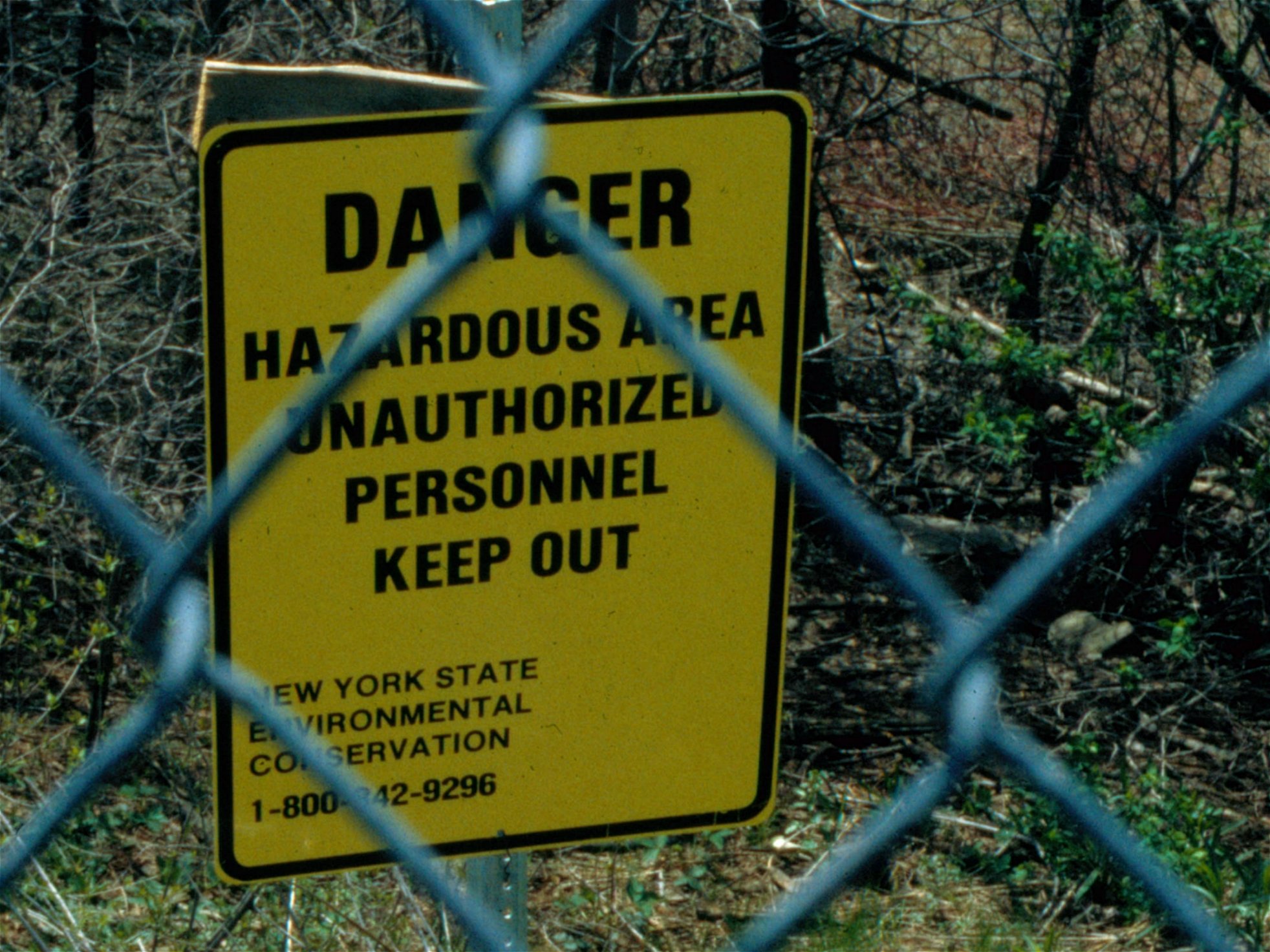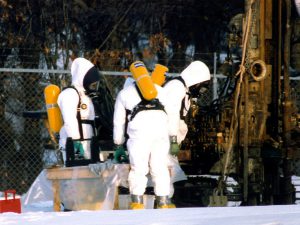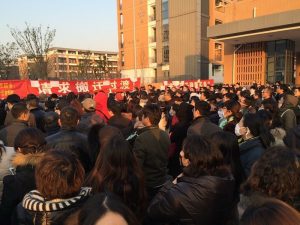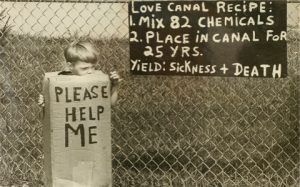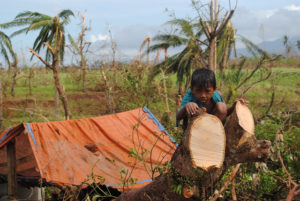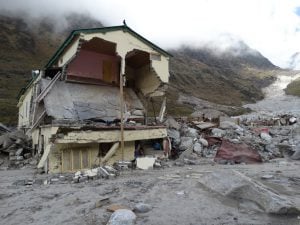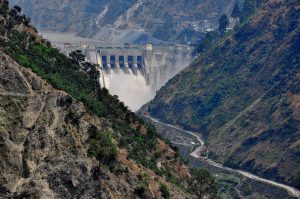“Even in the 21st century there is still power in the Love Canal brand,” writes Richard S Newman in his historical account of Love Canal, the neighbourhood in northern New York where a community built on top of a chemical dumpsite spurred widespread recognition of the dangers of toxic waste.
It is the legacy of this Love Canal “brand", Newman argues, that has enabled this site to shed light on the alarming consequences of industrial waste, both in the United States and beyond.
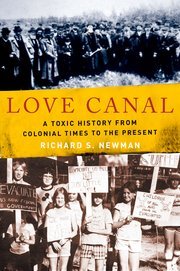 Love Canal is perhaps best known for instigating the 1980 adoption of the Superfund Act, the first US law to establish means for remediating toxic waste disposal sites. But why were tens of thousands of gallons of hazardous chemicals dumped there in the first place? And how did the residents of Love Canal transform local health concerns into an environmental movement that influenced national policy, and sparked a broader discussion of citizens’ environmental rights?
Love Canal is perhaps best known for instigating the 1980 adoption of the Superfund Act, the first US law to establish means for remediating toxic waste disposal sites. But why were tens of thousands of gallons of hazardous chemicals dumped there in the first place? And how did the residents of Love Canal transform local health concerns into an environmental movement that influenced national policy, and sparked a broader discussion of citizens’ environmental rights?
These questions are central to Newman’s meticulously-researched work. The US historian examines the historical pathways that led to the tragedy. A key narrative is the rise of industrial development in America and human exploitation of the environment.
Newman argues, “The Love Canal citizens’ movement was the first group to challenge this industrial path-dependence; to break the cycle of disposable land use that had long dominated area politics and economics.”
The book is split chronologically into three sections: the history of the Love Canal site and why chemicals were dumped there, how Love Canal erupted in 1978 into a disaster that merited a national-level response, and what lessons are to be gleaned from the disaster.
While most commentaries of Love Canal begin when chemicals were buried en masse in the mid-20th century, Newman begins his account in the 17th century. He traces how the Niagara region had been eyed as an ideal environment to be commandeered for economic gain, seducing visionary William Love to dig the physical canal as part of his attempt to build a “Model City” before abandoning the project amidst financial troubles around the turn of the 20th century.
The same landscape – rich in natural resources and hydroelectric power – enticed Hooker Chemical Company to locate production there, and later use Love’s abandoned canal to dump chemical byproducts. Shortly after the dumpsite was sealed, a suburban neighbourhood was built and working-class families moved in.
Flash forward to the summer of 1978, when residents began linking health concerns to chemical leachate seeping into groundwater.
Love Canal’s transformation from an isolated incident to a public health crisis during the summer of 1978 was a direct result of citizens’ efforts to advocate for their right to live in a safe environment. People held protests that attracted media attention, hosted tours of the polluted site for officials, and mapped data to illustrate how the site threatened human health.
Newman argues that Love Canal solidified its historical role as a symbol for toxic waste “nightmares” when New York’s head health official declared it necessary to evacuate people from the site, after succumbing to pressure from aggrieved residents. Moreover, by framing events not only as a health crisis but as an environmental disaster, local residents reconfigured America’s environmental movement to incorporate protection of people as well as places.
Personal stories
Newman’s historical approach highlights humans’ relationship with the environment and how individual people shaped Love Canal’s legacy. He tells stories that are often ignored, such as the role of housewives-turned-environmental activists; the interplay between multiple citizen groups and their adoption of different tactics to push government for solutions; and the journalists who kept the case in the national limelight. These narratives echo factors that continue to influence environmental justice movements today.
As an historical analysis, Newman’s book may leave policy wonks wanting; especially in terms of details of new environmental laws that followed in the wake of Love Canal, or the incident’s influence on industrial regulation. For example, though Newman briefly mentions new information transparency and “right-to-know” laws, a deeper analysis of these laws, their influence on relationship with NIMBY movements and citizen activism would have been appreciated. In that vein, it was interesting to learn how Love Canal activists served as a key source for disseminating information to other toxic waste victims across the US in the pre-Internet era, giving rise to the idea of “Love Canal, USA”: a nation littered with hazardous waste sites.
Toxic legacy lives on
Newman reminds readers that the Love Canal story is not over: over 20,000 tonnes of toxic waste remains buried in the ground. After an old sewer pipe was removed in 2011, a new round of health-related complaints erupted, leading to over one thousand claims to be filed by 2014. Meanwhile, about one quarter of the US population currently lives within five miles of a Superfund site, defined as one of the worst 1,000 or so hazardous waste sites placed on a National Priorities List for long-term cleanup.
The Superfund is perhaps the most well-known policy solution to the notoriously difficult issue of soil pollution remediation, but the law has not necessarily been successful in addressing financial and technical challenges.
Lessons for China
Newman’s focus on the legacy of Love Canal and how it persists in shaping public perception worldwide is certainly relevant for countries that still lack policies to handle similar events. Most recently, earlier this year, hundreds of pupils attending a new campus of Changzhou Foreign Languages School, a top secondary school in China’s Jiangsu province, became ill with ailments that were quickly linked to pollution from three former chemical plants situated next to the school.
The media’s labelling of the incident as “China’s Love Canal” arguably refocused China’s national soil pollution discussion to the risks of developing former industrial sites, in addition to just remediating polluted farmland. Though China still lacks legal procedures for handling soil pollution, in the wake of the incident, China’s State Council finally released its long-awaited national Soil Action Plan, and a new Soil Pollution Law is on the legislative agenda for 2017.
Love Canal is very much an American story. Still, Newman’s book reminds us as new incidents arise to not only consider how to handle these sites going forward, but to reflect on the deep-rooted historical causes of these incidents.
